This is a personal experimentation in the field of asemic writing and my thesis project for my Bachelor's Degree in Graphic Design obtained in 2019.
Asemic writing...
... is an artistic or poetic area, that shows a type of writing that hasn't a specific semantic content.
... isn't spoken, nor it's read, but it can be observed and visually transmitted.
... is an open form of writing, it has value as a set of graphisms and uncoded traces.
... is an abstraction of conventional writing, it goes beyond the common expression of a readable text.
Asemic writing is a graphic expression of what resembles something readable, but it's not.
work phases of page one in the first booklet
The project
This is an evolution of a path that began with “Sfogliamente”, a book where the aim was to question whether legibility in a text must necessarily dominate over expressiveness or not. Here the aforementioned assumptions are pushed to extremes. If "Sfogliamente" merged graphics and illustration and avoided grids to focus everything on the hand-drawn lettering, here we take a step forward: the legibility of the text is completely eliminated.
I named this project "Asemic Re-compositions", because I used poems as a material to make a sort of digital de-collage. Regarding the texts, I chose the poetic field of Hermeticism, that stood out for being an obscure and difficult poetic language to understand, almost close to incommunicability. Specifically I took the poems of the precursor of Hermeticism: Giuseppe Ungaretti.
I divided the poems in four topics inspired by the texts content (light/darkness, union/fragmentation, journey, water/aridity). I assigned a specific font to each group and some aesthetic rules, after that the letters were vectorized and used in Illustrator in a similar way one would behave with a real collage (like the work of Cecil Touchon in painting for example). The letters were never deformed, just cut/enlarged/diminished.
The letters of each specific composition were, none excluded, used as "bricks" to be cut and dislocated in order to create a new composition, which is no longer a text. There remains a set of graphic forms that have been generated from words and are now something else.
Four booklets (24x17 cm) have been created, printed and hand sewed. Then they've been enclosed in a customized case, whose design was made with the font I created for the “Sfogliamente” project. I did this to underline the link between the two works.
some wips
Book I - Light/Darkness
- Font: Bebas (version 1.1 by Ryoichi Tsunekawa)
- Paper: white Dalì
- Color: B&W
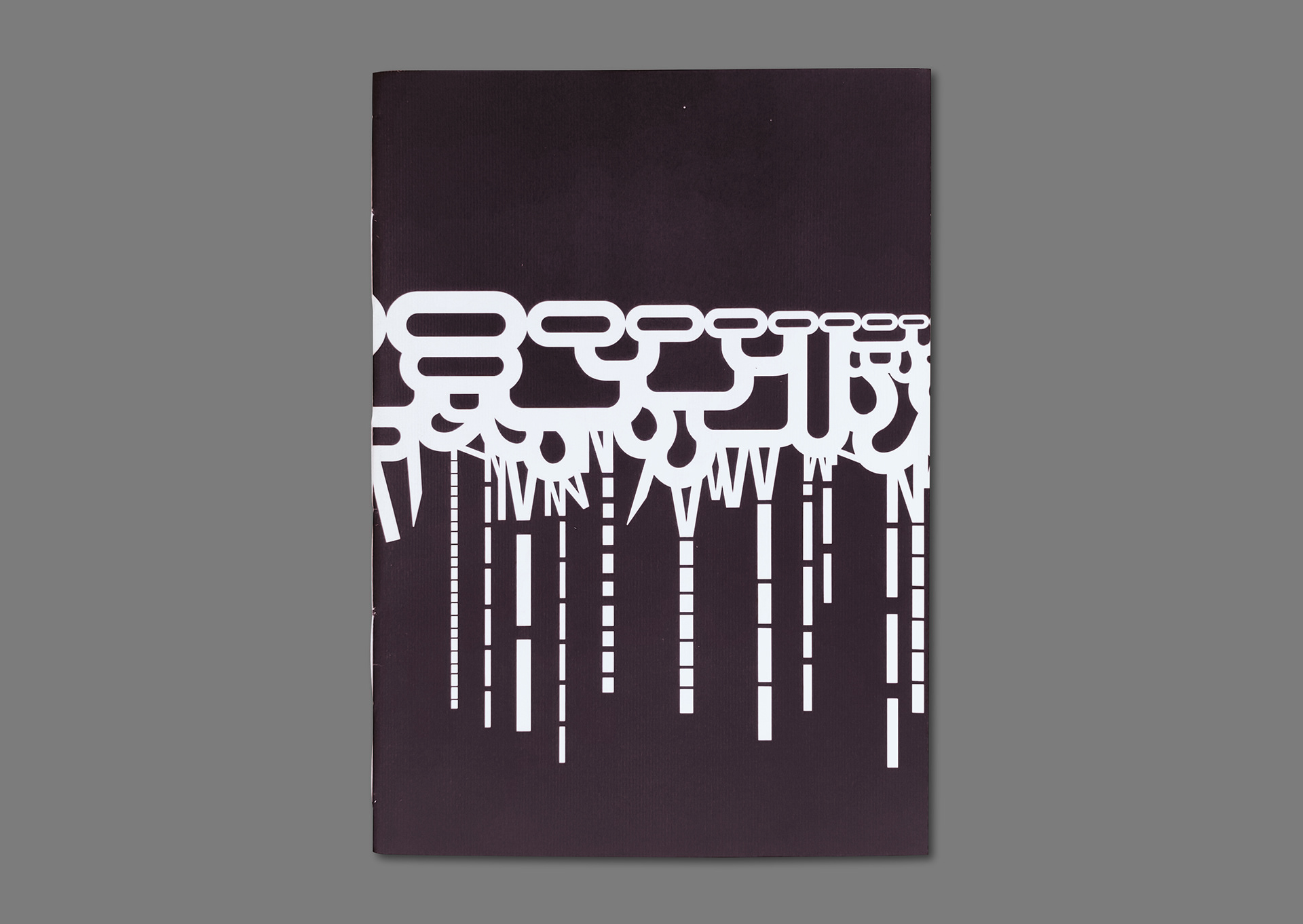
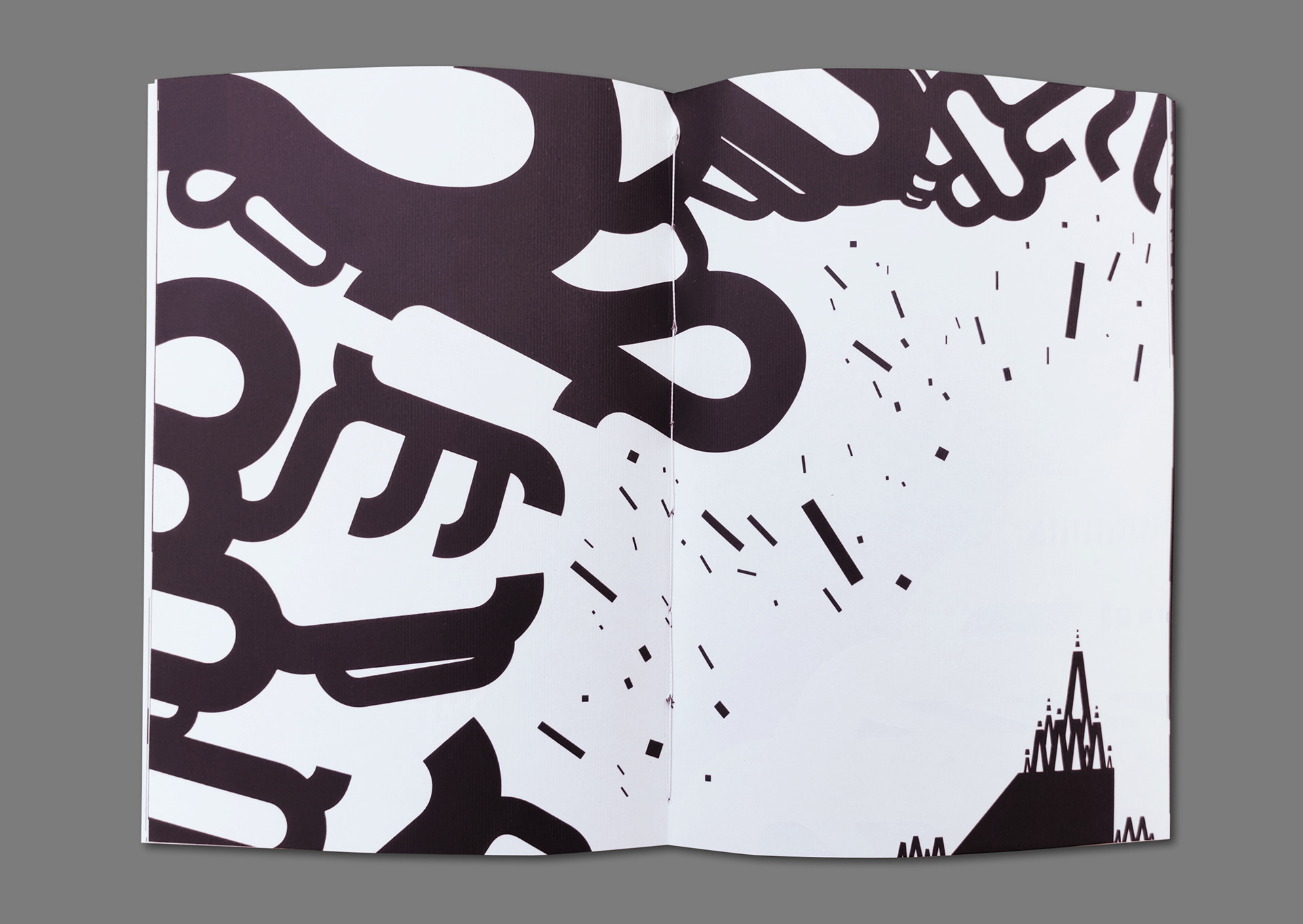
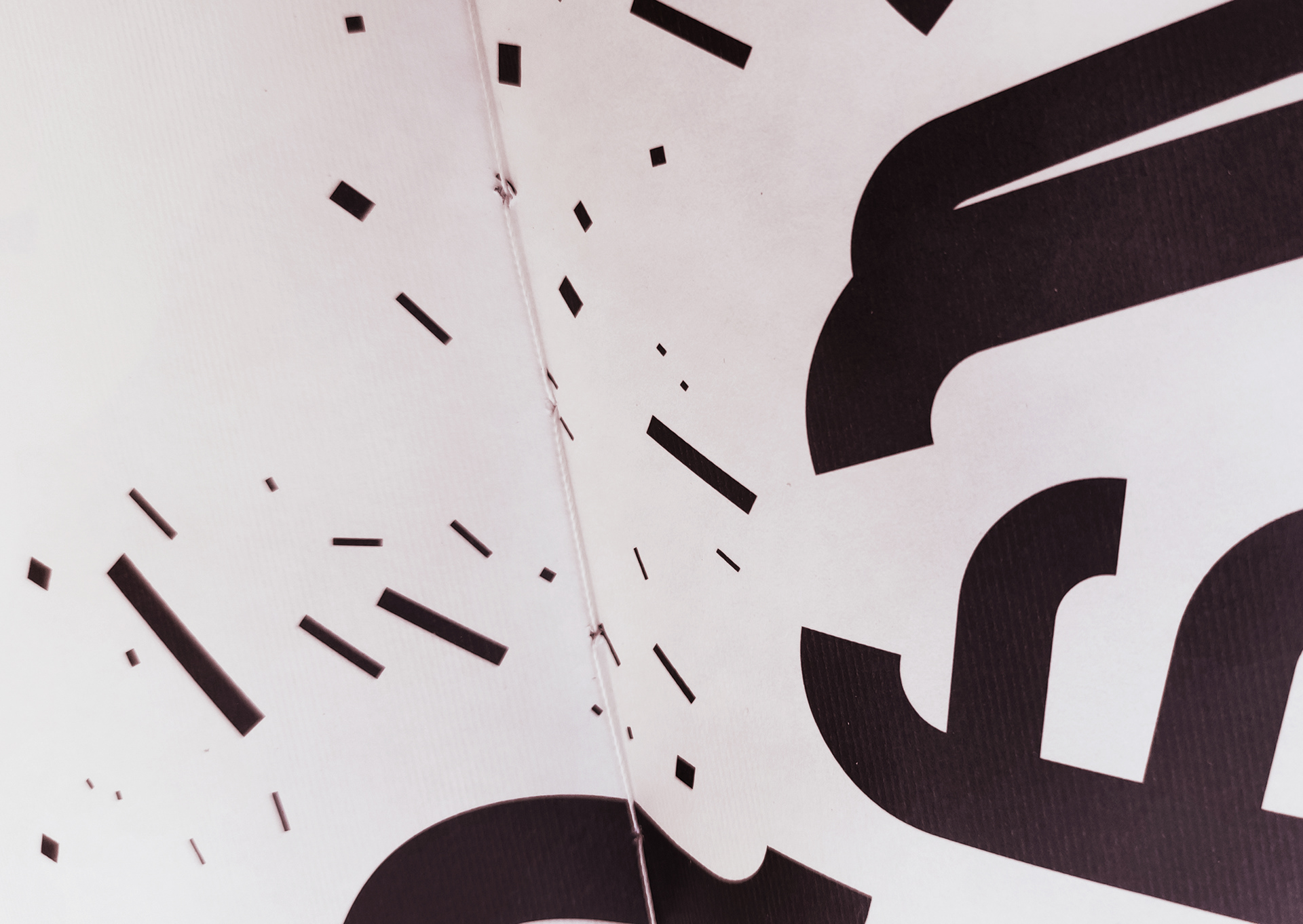

Book II - Union/Fragmentation
- Font: Lato Hairline
- Paper: white Bindakote (this paper is glossy on a side and opaque on the other)
- Colors: C,M,Y,K




Book III - Journey
- Font: Rockwell Regular
- Paper: white Colorcopy
- Color: blue (100 C, 89 M, 0 Y, 2 K)
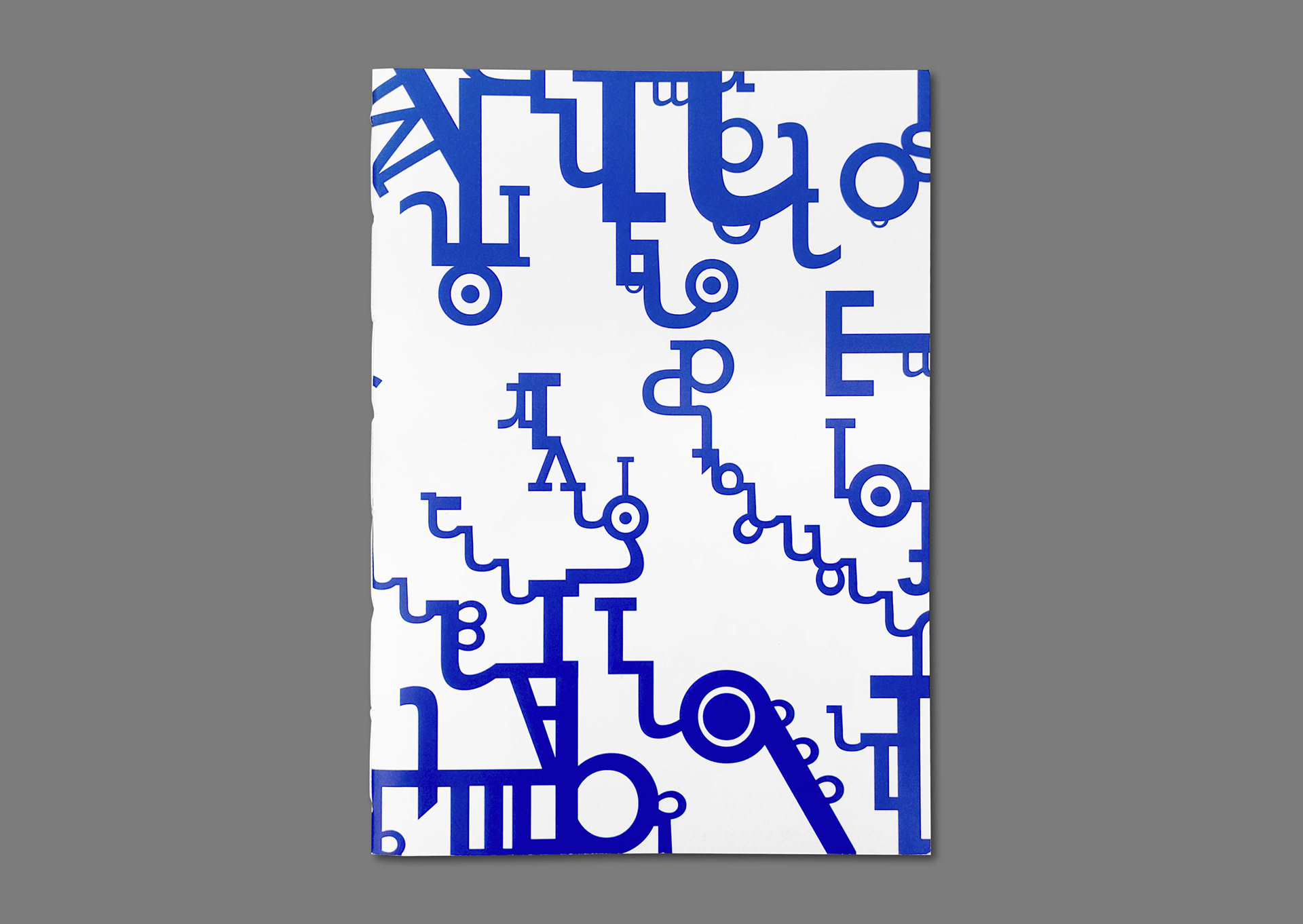
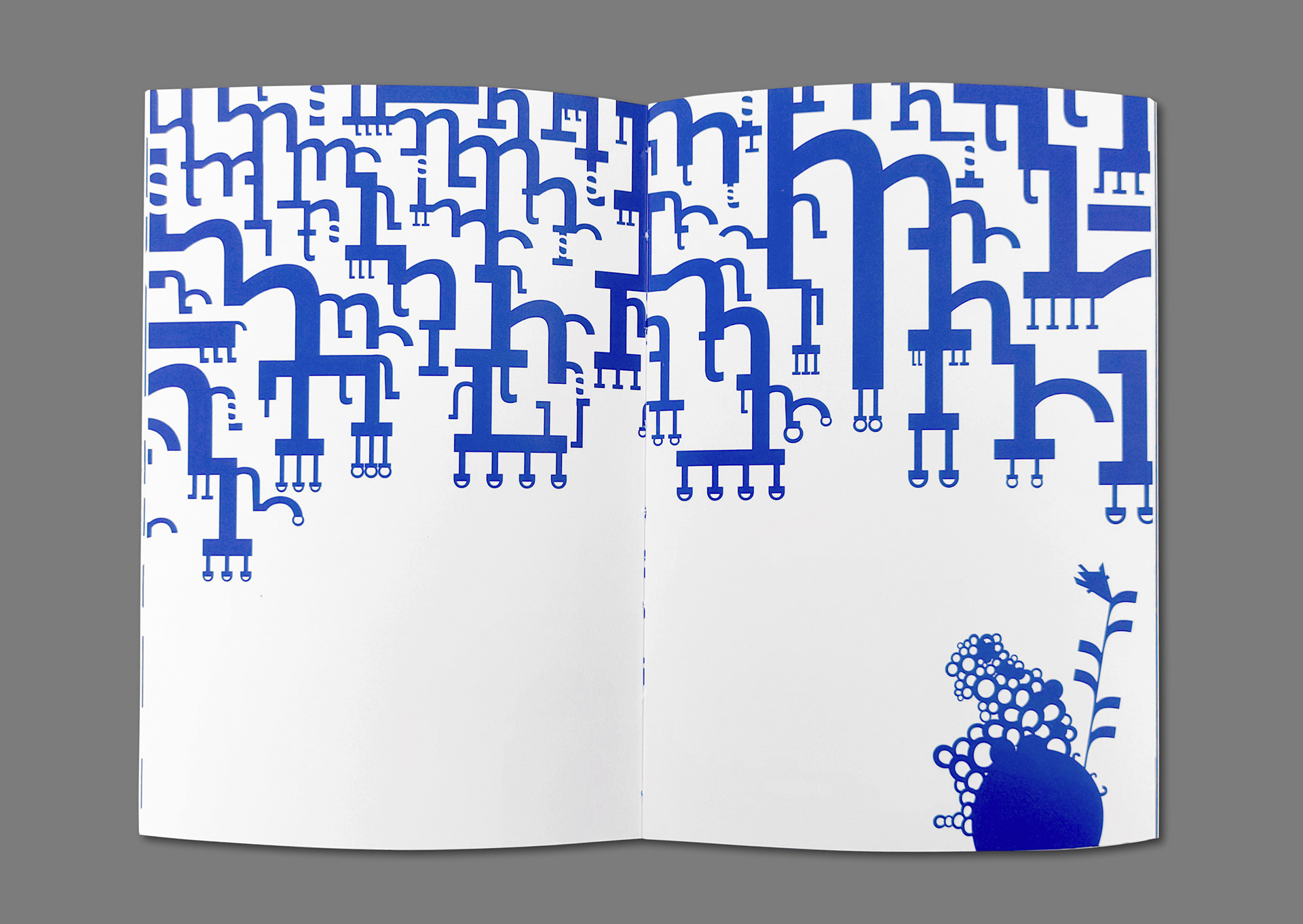
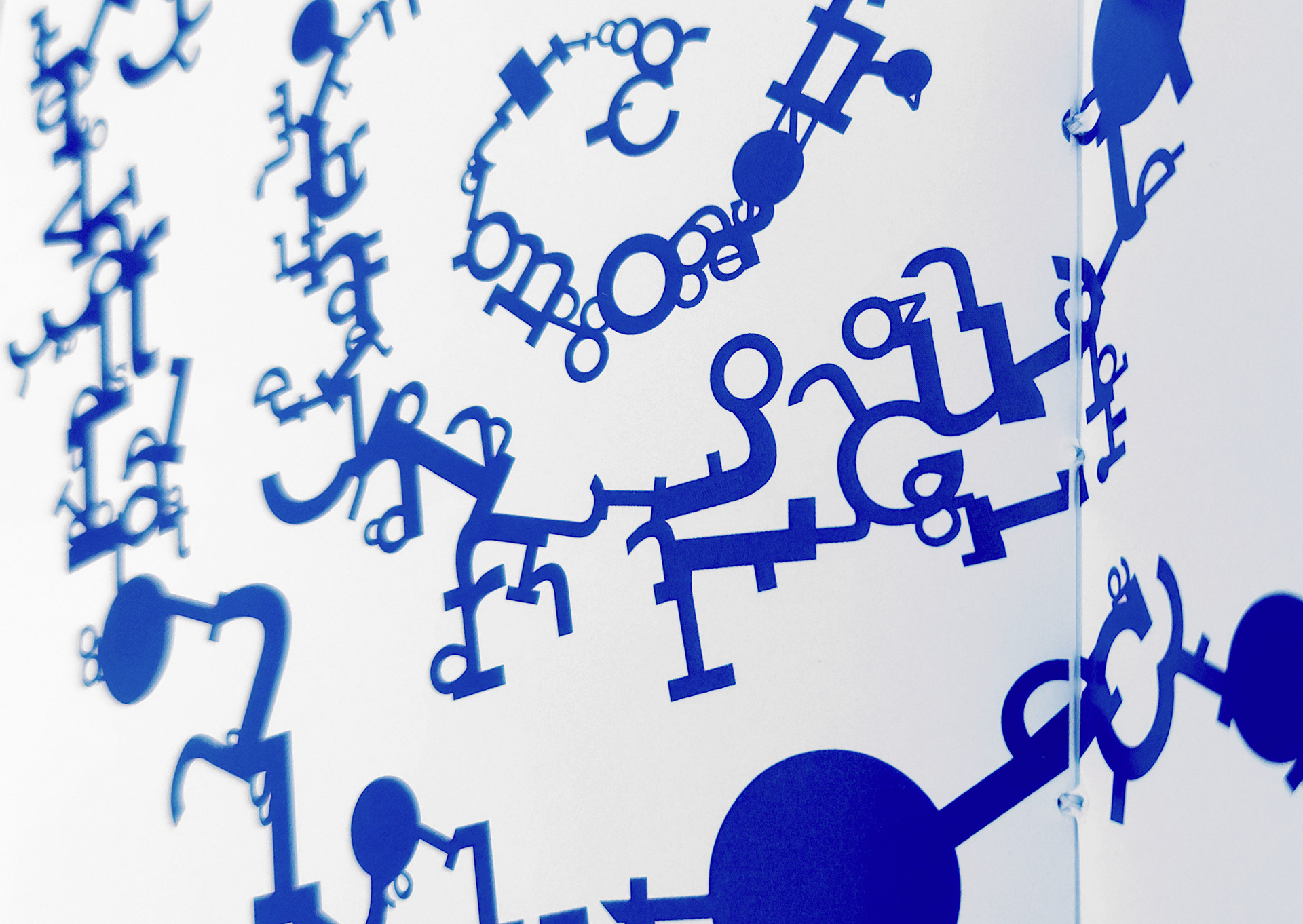

Book IV - Water/Aridity
- Font: Amatic SC
- Paper: ivory recycled paper Flora
- Color: light blue (64 C, 14 M, 18 Y, 0 K)
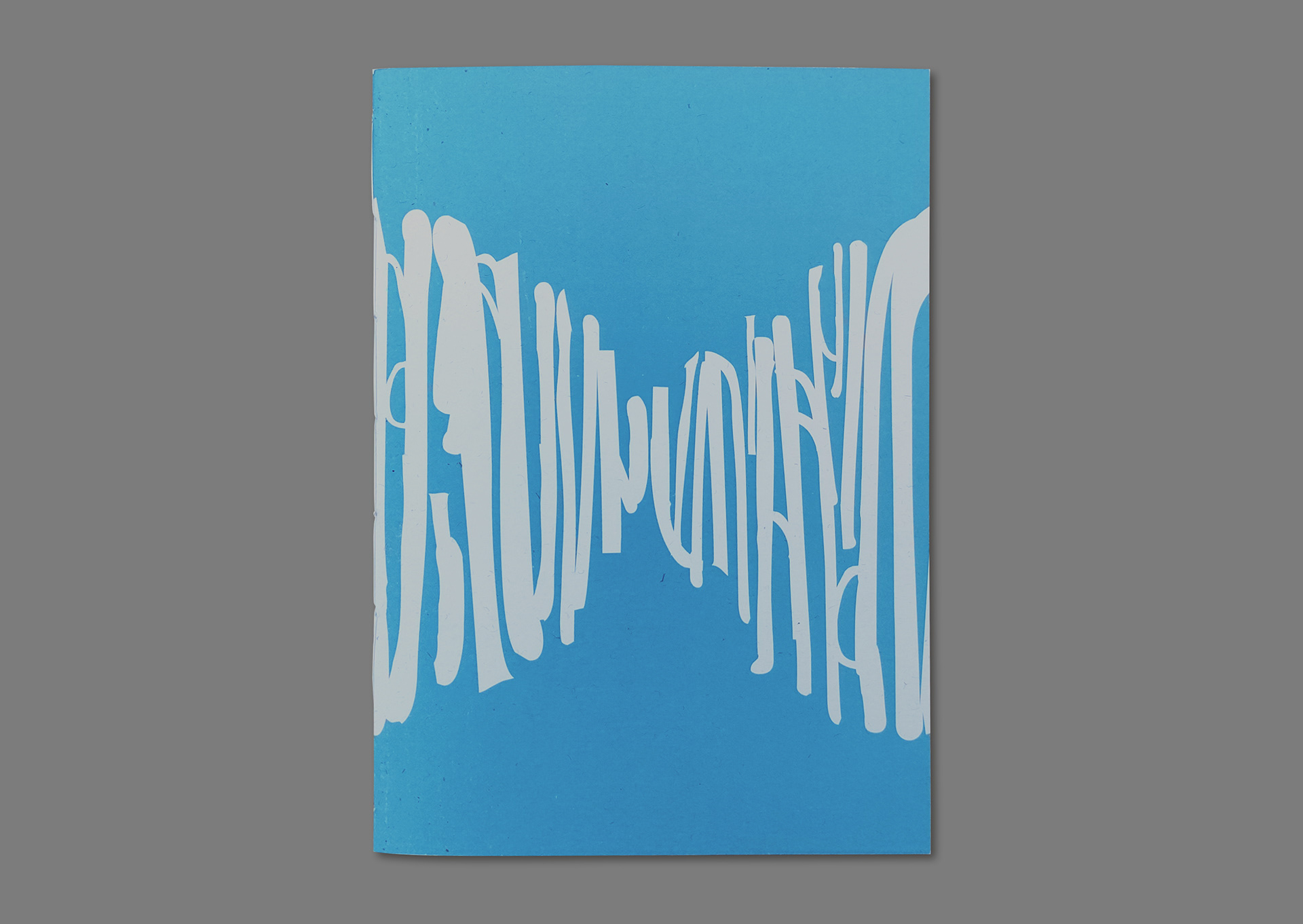
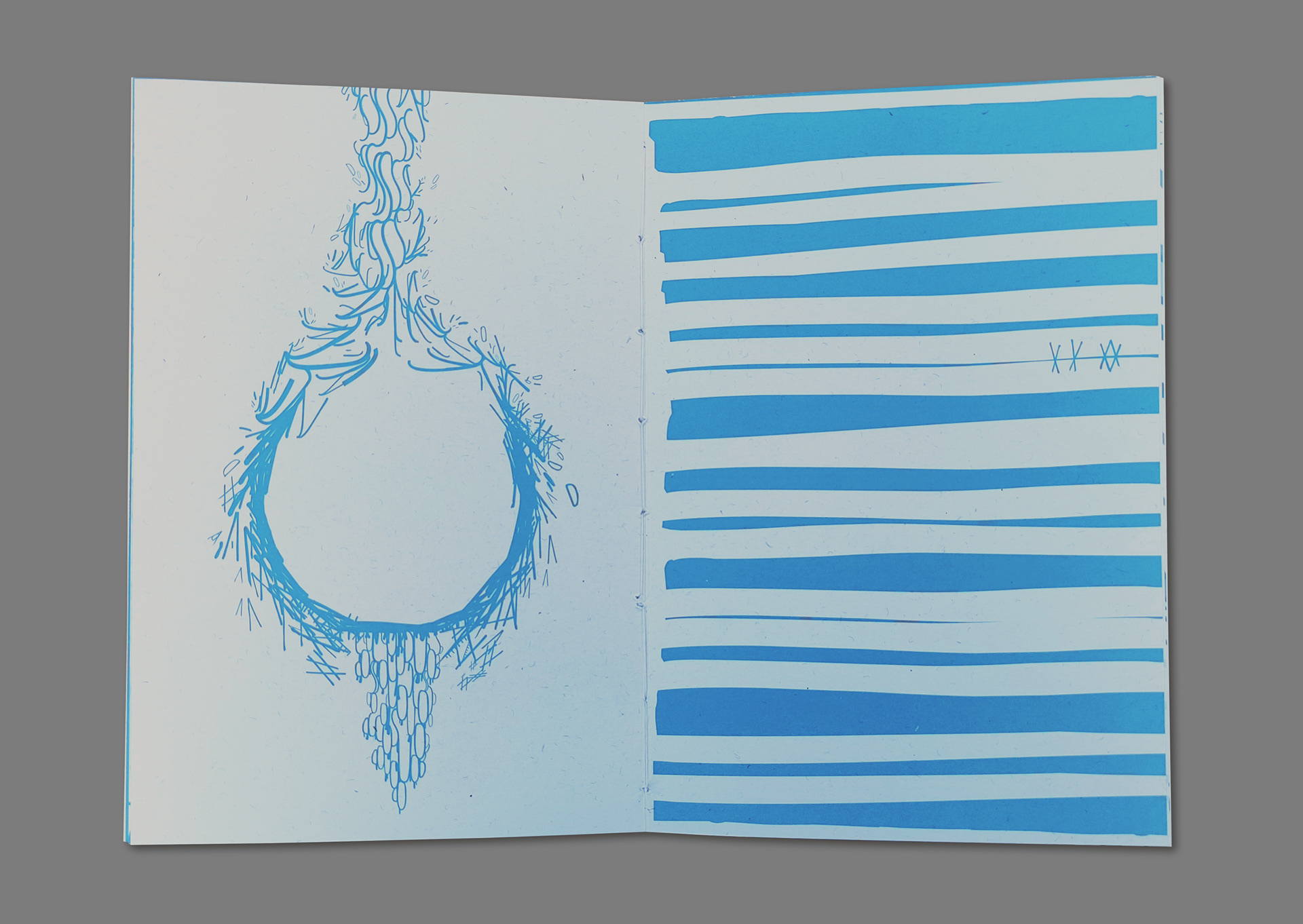
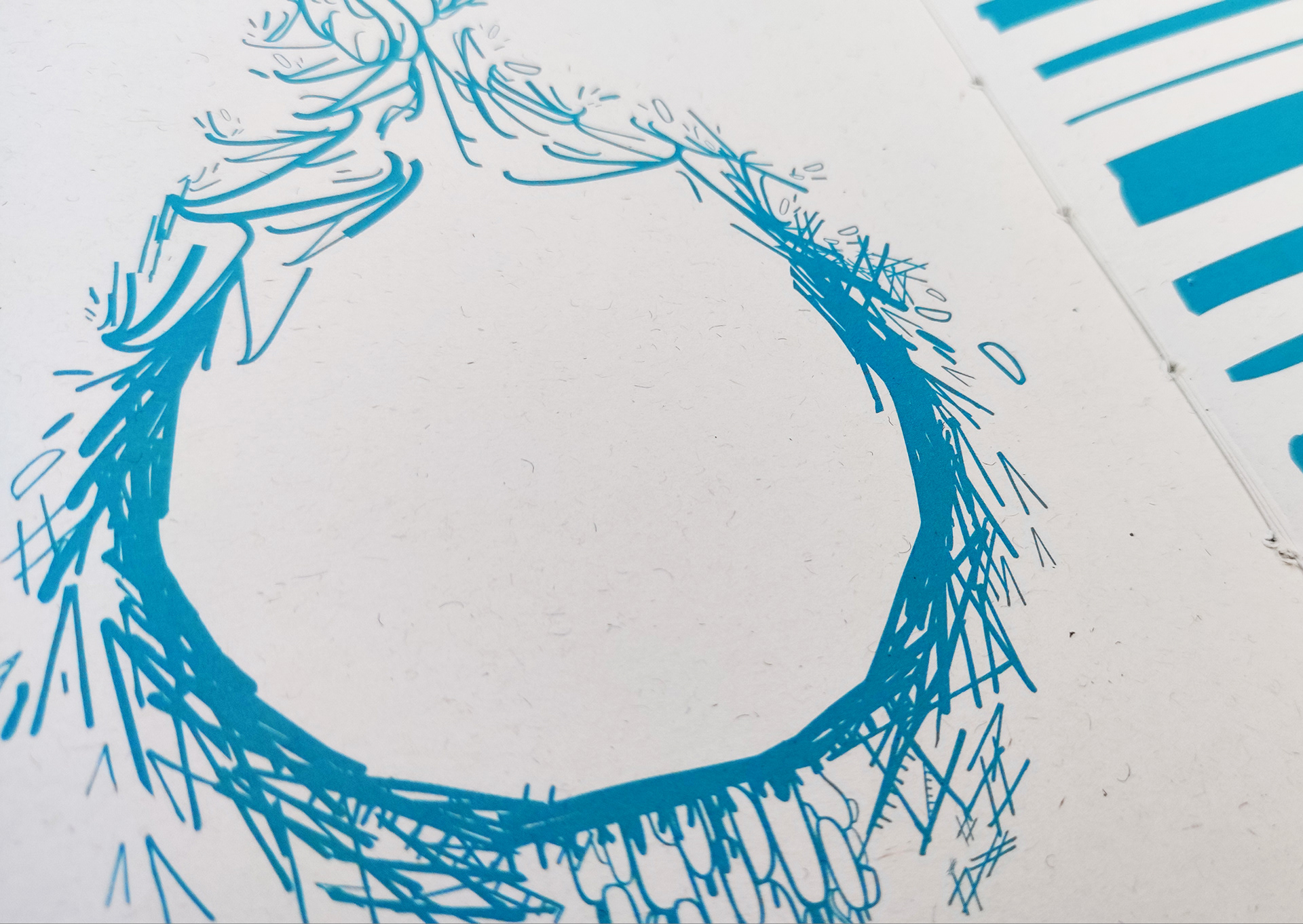
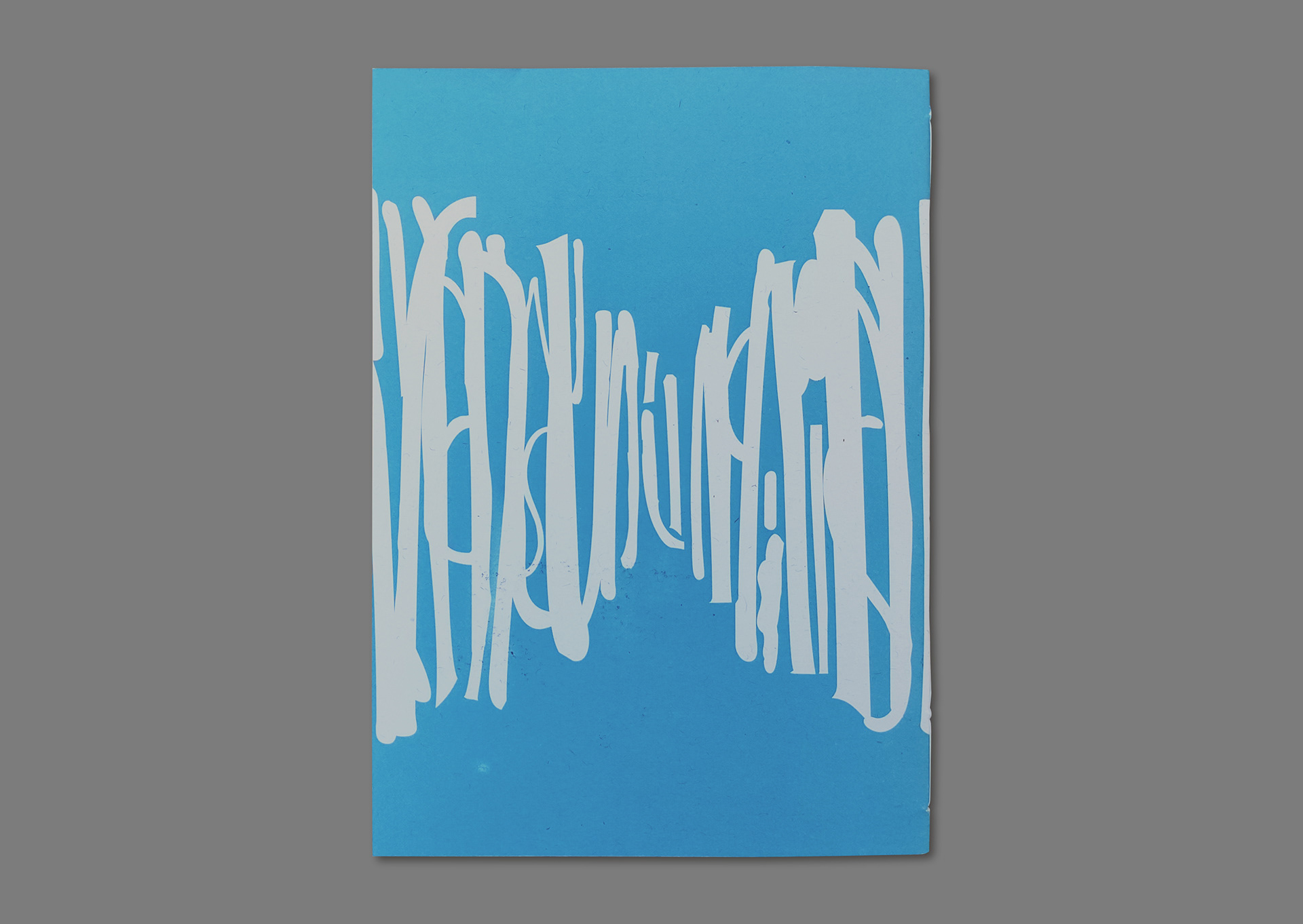
Customized Case
The LABA academy asked me to participate in a collective exhibition with Sfogliamente and Asemic Re-compositions as I graduated there with 110/110 cum laude, plus an "Excellence Mention" for the experimental thesis. The exhibition was called "leopereeigiorni" and was set in the historical building and Museum of Ospedale degli Innocenti in the centre of Florence from 10th to 15th of July 2021.
⇓

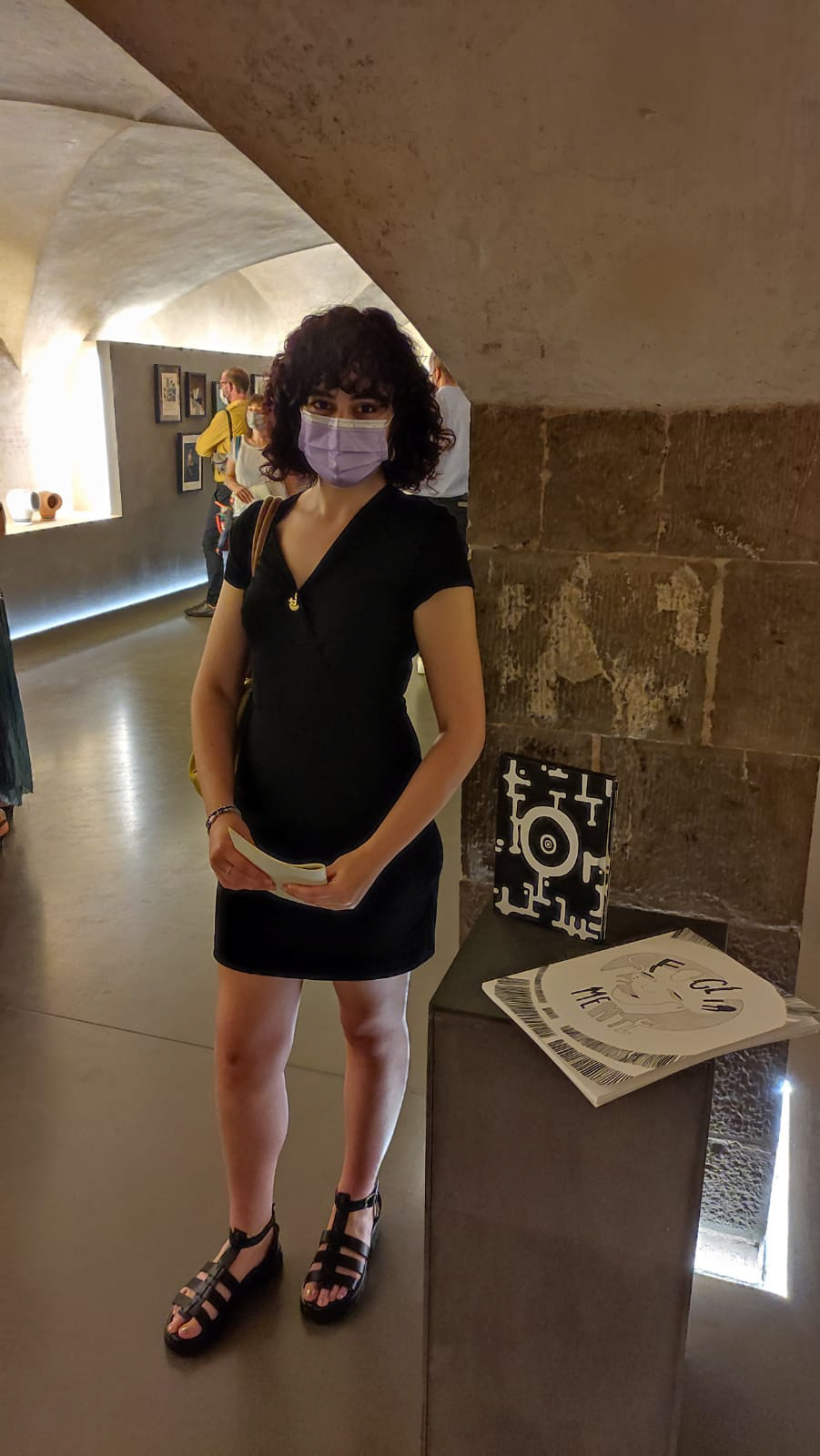
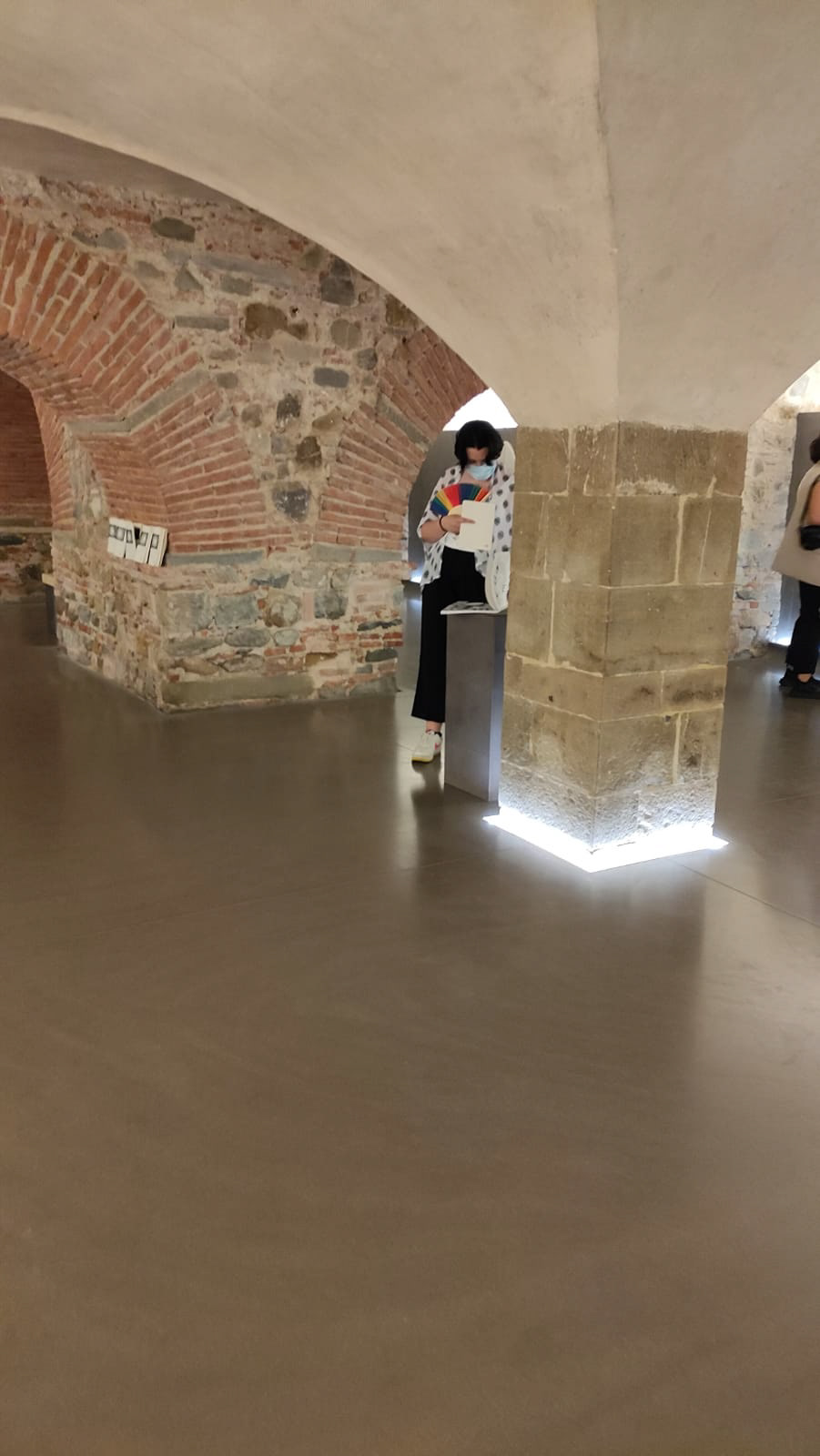
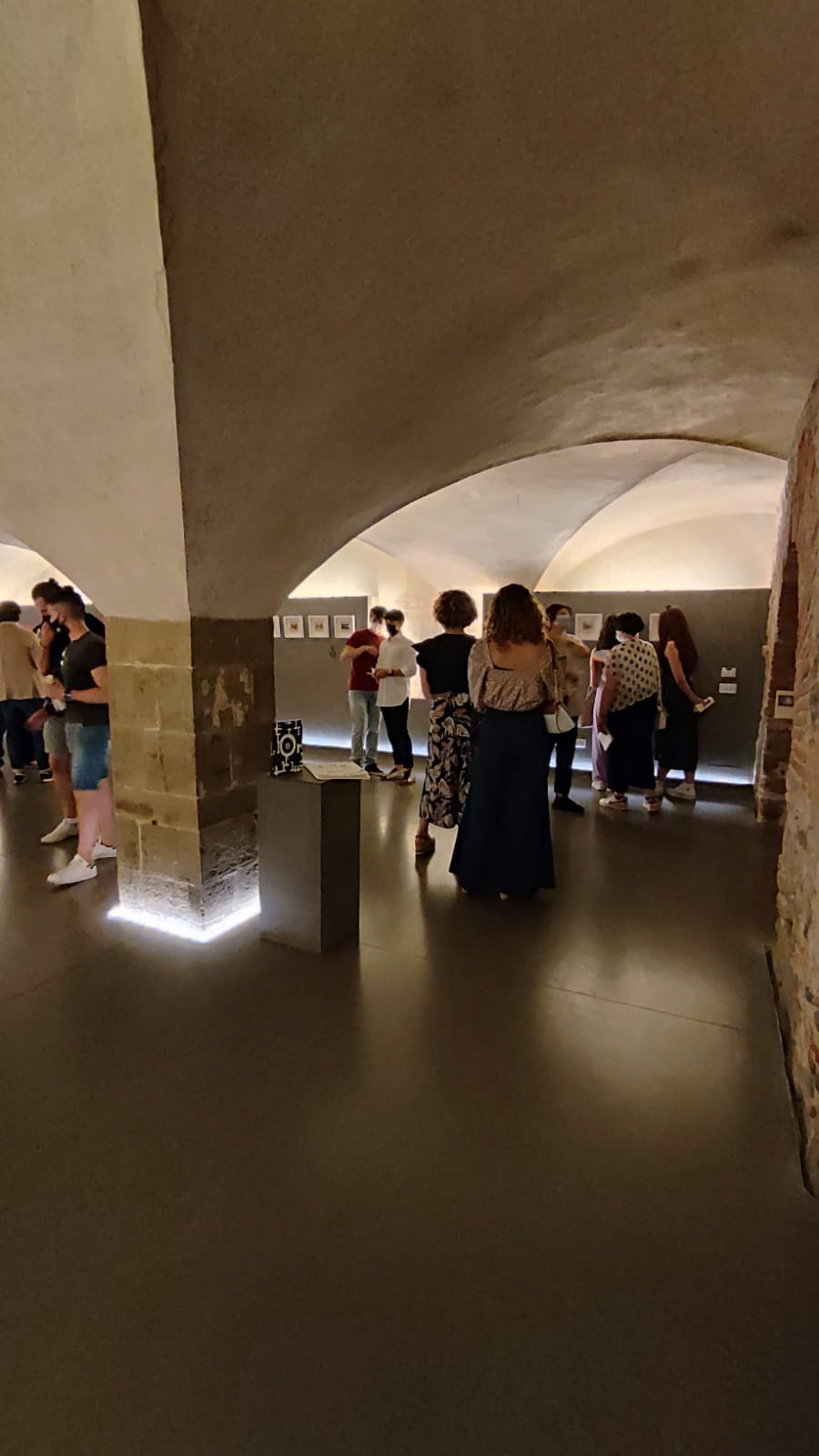
Book I
Book II
Book III
Book IV
Useful links and Bibliography
- C. Sini, Il sapere dei segni, Milano, Editoriale Jaca Book S.p.A., 2012, (pp. 9-22, 41-52) - E. De Luca e A. Mendini, Diavoli Custodi, Milano, Feltrinelli, 2017
- F. Aprile e C. Caggiula, Asemic writing - Contributi teorici, Ivrea, Archimuseo Adriano Accattino
- M. Ferraris, Documentalità, Bari, Editori Laterza, 2014 (capitoli pp. 221-250, pp. 337-357)
- O. Calabrese, Il linguaggio dell’arte, Milano, Strumenti Bompiani, 1986, (pp. 96-109) - R. Barthes, L’ovvio e l’ottuso (Saggi critici III), Torino, Giulio Einaudi, 1985, (pp.
157-175)
- R. Harris, La tirannia dell’alfabeto, Viterbo, Stampa Alternativa & Graffiti, 2003
- R. Harris, La tirannia dell’alfabeto, Viterbo, Stampa Alternativa & Graffiti, 2003
- Making sense of asemic writing, articolo dal blog “The Center for Book Arts (NY)” in https:// centerforbookarts.org/making-sense-of-asemic-writing/, consultato il 29.07.2019
- Treccani Vocabolario on-line, voce “sèmico" in http://www.treccani.it/vocabolario/ricerca/ semico/, consultato il 29.07.2019
- The New Post-literate: A Gallery of Asemic Writing, blog ufficiale per la pubblicazione di elaborati asemici curato da Michael Jacobson, in http://thenewpostliterate.blogspot.com/, consultato il 29.07.2019
- Intervista a Michael Jacobson, On Asemic Writing in https://www.asymptotejournal.com/visual/ michael-jacobson-on-asemic-writing/, consultato il 29.07.2019
- Articolo di Ludovica Lugli, La storia di un libro leggendario in una lingua illeggibile, da “Il Post Libri”, in https://www.ilpost.it/2016/06/16/codex-seraphinianus/, consultato il 30.07.2019
- I. Calvino, Orbis Pictus Seraphinianus, in FMR, anno 1982, n. 1, in https:// blogbibliophilia.wordpress.com/2017/04/13/orbis-pictus-seraphinianus-di-italo-calvino/, consultato il 30.07.2019
- Zhang Xu - Tang Dynasty da “China Online Museum” in http://www.chinaonlinemuseum.com/ calligraphy-zhang-xu.php, consultato il 30.07.2019
- Voce “Shan Shui”, da Wikipedia, enciclopedia libera in https://it.wikipedia.org/wiki/Shan_shui, consultato il 30.07.2019
- Mike Cai, Chinese Shan Shui Painting Through the Yuan Dynasty in https://m.epochtimes.it/ news/la-pittura-paesaggistica-cinese-shan-shui/, traduzione su “China Online Museum”, consultato il 30.07.2019
- K. Caloi e S. Orlandi, “IL LETTRISMO: Equilibrio fra presunzione e innovazione” in http:// www.artantide.com/news_Articolo?idArticolo=1431 , Febbraio 2012, consultato il 30.07.2019
- Enciclopedia IlSapere, voce Lettrismo in http://www.sapere.it/enciclopedia/lettrismo.html, consultato il 30.07.2019
- Intervista a Ekaterina Samigulina su SCRIPTJR del 25.12.2015, http://scriptjr.nl/four-questions- about-asemic-writing-11-ekaterina-samigulina/3429#.XU0repMzbRZ, consultato il 10.08.2019
- Intervista a Luigi Serafini del 23/02/2017 trascritta sulla rivista “Hamelin”, Rendere analfabeti: la genesi del Codex Seraphinianus. Incontro con Luigi Serafini, di Ilaria Tontardini ed Emilio Varrà, riportata dal sito FUMETTOLOGICA, nell’articolo: La genesi del Codex Seraphinianus in https:// www.fumettologica.it/2017/05/genesi-codex-seraphinianus-incontro-luigi-serafini/, consultato il 12.08.2019
- Sezione “Typographic Abstraction Paintings” dal sito ufficiale dell’artista, in: https:// ceciltouchon.com/paintings-2/, consultato il 12.08.2019
- Intervista “Asemic Writing” dal sito ufficiale dell’artista, in: https://ceciltouchon.com/asemic- writing/, consultato il 12.08.2019
- The Cecil Touchon Asemic Reader in: https://ceciltouchon.com/2019/06/13/new-book-the-cecil- touchon-asemic-reader/, 12.08.2019
- Voce “perfezióne”, in Treccani Vocabolario Online, in: http://www.treccani.it/vocabolario/ perfezione/, consultato il 13.08.2019
- Intervista a Federico Federici, del 24/07/2019, in: https://leserpent.wordpress.com/2018/07/24/ artist-talk-my-experience-with-asemic-writing-berlin-july-14-2018/, consultato il 13.08.2019
- ASEMIC, pagina edita da Tim Gaze, in: http://www.asemic.net/, consultato il 13.08.2019
- Apollinaire, i calligrammi d’amore per Lou, articolo del Corriere della Sera - laLettura, in: https:// www.corriere.it/foto-gallery/la-lettura/libri/16_marzo_03/apollinaire-calligrammi-lou-4cb8d300- e159-11e5-86bb-b40835b4a5ca.shtml, , consultato il 18.08.2019
- Intervista a Francesco Aprile, in Satisfiction, sito di critica letteraria, articolo pubblicato il 24/07/2018 in: https://www.satisfiction.se/asemic-writing-intervista-a-francesco-aprile/, consultato il 20.08.2019
- Ricciardi Claudio, Una mano senza alfabeto, dal sito web per condivisioni di pubblicazioni scientifiche academia.edu, p. 11 in [https://independent.academia.edu/ClaudioRicciardi], 2019, consultato il 25.08.2019
